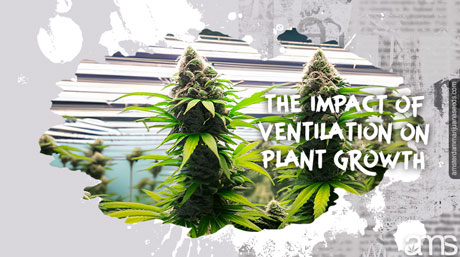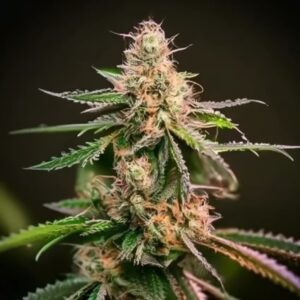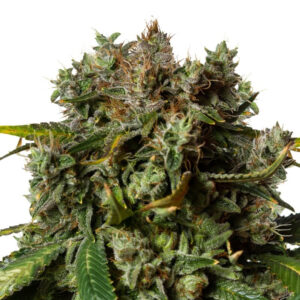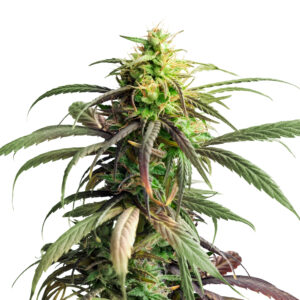A lot of planning goes into properly setting up a cannabis grow room. Proper air circulation is considered one of the principles grow room requirements. To a large extent, the level of air circulation achieved in the grow room depends on the external atmospheric conditions. If grown outdoors, cannabis is exposed to a circulating current of wind that continuously regulates the temperature and humidity around the open garden. The air circulation goal for a grow room is to simulate these conditions in an enclosed space. If the ventilation stem grows, the room is poor; you risk exposing your plant to unfavorable growth conditions. In the worst case, harvest yield is adversely affected, and you can lose your investment.

Humidity and temperature are parameters you want to get right once your planting operation commences. Generally, cannabis plants in the grow room thrive better at a temperature range of about 18 to 24°C (65 to 75°F) during the vegetative stage. During the flowering stage, the optimal temperature range is set at 18 to 26°C (65 to 78°F). For humidity, depending on the stage of growth, Indoor cannabis plants generally thrive better at a relative humidity range of 40% – 70%. These parameters are expected to be constant from one end of the grow room to the other. Air circulation affects how these parameters measure in the grow room.
If ventilation is not properly planned, the grow room temperature and humidity are significantly altered beyond the recommended range. Since the grow room is maintained in a similar condition to the plant’s natural habitat, temperature and humidity changes can disrupt the plants’ growth cycle. This puts your plant at great risk.
At a higher humidity level, the environment provides the right medium for mold and bacteria growth. As the air stagnates, moisture settles under the canopy of the cannabis leaves. Temperature also increases. High humidity and an increased temperature create the perfect environment for powdery mildew and mold. Once infected by these organisms, cannabis performs poorly during the vegetative and flowering stages. Mold infection can be tough to control.
The cost of control can also overstretch your budget as you spend more. In high temperatures, the plant loses water rapidly, and nutrients are also lost. Cannabinoids sensitive to extreme heat signatures can also become structurally altered. These changes adversely affect the plant’s flavor, taste, and terpene composition. This is one of the primary ways your cannabis can lose its potency. Read this article; on how to get rid of mold on weed to learn more about mold and what you can do.
Poor ventilation makes everything still. The ambiance is dull, and water droplets gather around the plant easily. The clear canopy and foliage create a suitable environment for cannabis root aphids, spider mites, and fungus gnats to grow. These pests are generally found in environments with limited air circulation. They might lay eggs, procreate and feed on the plant nutrient directly. You can prevent all these by simply creating a continuous air stream around the plants.
The bulk of air needed to ventilate the growing room is drawn from the external environment. This air volume is untreated and may likely harbor contaminants, dirt, and airborne seeds. Carbon filters perform the primary function of improving the integrity of this air. This installation is designed to scrub the air free of contaminants. In addition to removing contaminants, carbon filters can perform a secondary function of removing the characteristic cannabis odor from the grow room. All you have to do is attach the filter to the exhaust system. With this arrangement, the carbon filter absorbs the volatile terpenes given off by the plant.
Extractor fans help remove old air from the grow room. In many cannabis grow farms, you will commonly find exhaust fans installed at the top of the room. This makes logical sense since the fan is primarily charged with removing old, hot from the room. Hot air rises and fills the top of the room. From this position, this air is easily removed by exhaust fans. One important recommendation with exhaust fans is knowing what type and capacity of the fan to purchase. The capacity of indoor extractors is measured in m3 (CFM) –cubic meters per minute. The right exhaust fan you will need depends on the size of your grow room.
m3 (CFM) describes the volume of air your exhaust fan needs to exhaust per minute. To get the right exhaust fan, you should first determine the cubic area of your grow room. The Cubic area of any space is calculated by multiplying its length, width, and height.
CFM = Length x Width x Height
It is recommended that you get a fan with an m3 (CFM) equal to the volume of your grow room as calculated. Once installed, this fan can efficiently replace the air in your grow room every minute.
Oscillating fans complete the ventilation setup for the cannabis grow room. They are the simplest equipment to install of all listed here. Oscillating fans should be placed in a part of the grow room to help circulate air around the plant efficiently. By moving air around, oscillating fans ensure no stagnant air, and the risk of pest build-up is reduced.
Installing this equipment does not just magically move air around your grow room. You must fulfill a few conditions to ensure the operation runs smoothly.
Once your enclosed space is ready, the exhaust fans and the carbon filter should be the first pieces of equipment you install. This gives you a true estimate of how much space is left for other equipment and your plants. Sometimes, it becomes very tricky to install exhaust fans around grow lights and other equipment.
Once the filters and exhaust fans are operational, the grow lights are next on the list. Grow lights are simple to install and often come with a detailed installation manual. While installing the lights, you will want to ensure they are kept at a considerable distance from the plants. This is especially important for lights with a strong heat signature. The light should also be installed at an angle where all the plants can get optimal lighting.
All your installations should be fixed at a vantage point. They should not be freely moved around by the breeze from the fans. You can restrict everything to a fixed position by using duct tape.
Depending on the air intake method, be sure that the inlet system is fully operational. If you use a passive intake method, ensure the intake vents are open for maximum inlet action. If you use the active intake method, the intake fan should be installed close to the vents.
These are the commonly used methods of drawing air into the grow room. The passive air intake method relies on natural airstream flow through the open vents of the grow room. The volume of air drawn with this method depends on the size of the vent and the direction of the air current outside. As such, you cannot influence the air volume drawn into the grow room. However, you shouldn’t have any problem if the prevailing external weather conditions favor medium to high air currents.
In the active inlet method, the air is pulled into the grow room using a powerful intake fan. This method does not rely on the prevailing weather conditions. The fan is installed close to the inlet vent and kept on for extended periods. While using the active inlet method, the CFM of your intake fan must be slightly lower than the exhaust fan. This arrangement creates a negative air pressure that continuously allows air to flow in one direction –from the intake fan to the exhaust fan. This way, the grow room is properly ventilated, and the air is moved around easily.
Setting up a ventilation system for a grow room requires adequate planning. The installations must be done correctly, and a negative air pressure must be maintained. Following the guide, you should also ensure you have an exhaust fan with the right CFM. Your cannabis is guaranteed to grow in perfect conditions if you properly handle ventilation in the grow room.
Q1: Why is proper air circulation important in a cannabis grow room?
A: Proper air circulation is crucial in an indoor cannabis grow room to maintain optimal temperature and humidity levels, which are essential for healthy plant growth. Without adequate ventilation, the grow room can become too hot or humid, leading to mold, bacteria, mildew, and pest infestations. Proper air circulation also helps simulate natural outdoor conditions, ensuring the plants thrive and yield a high-quality harvest.
Q2: What equipment is needed to ventilate a cannabis grow room effectively?
A: Ventilating a indoor cannabis grow room effectively requires a combination of equipment:
Q3: How do I choose the right extractor fan for my grow room?
A: To choose the right extractor fan for your grow room, you need to calculate the room’s cubic area (length x width x height) to determine the volume of air that needs to be replaced. This measurement is typically given in cubic meters per minute (m³/min) or cubic feet per minute (CFM). It’s recommended to select an exhaust fan with a capacity equal to the volume of your grow room to ensure efficient air exchange. Ensuring the fan’s capacity matches your grow room’s size will help maintain optimal growing conditions.













Related Posts

The ideal temperature for different grow stages of cannabis plants in your indoor grow room
As a passionate gardener dedicated to cultivating the highest quality marijuana, I understand the importance of providing the optimal environment for your plants. One of the key factors that can significantly impact the growth and overall health of your cannabis plants is temperature. Different stages…

Discover expert tips for selecting and maintaining the best soil for cannabis. Learn about soil composition, pH balance, and DIY soil mixes for optimal plant growth.

Marijuana plants can be manipulated to produce higher yields by changing their natural light cycles. But how do you do that?